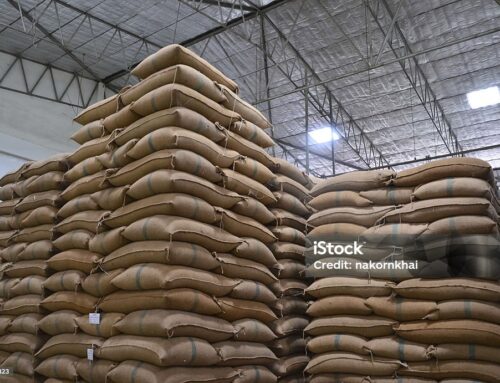Milk, a seemingly simple white liquid, is a complex and vital global commodity. From the pastoral landscapes where it originates to the bustling industries it nourishes and the diverse ways it’s consumed across cultures, milk plays an undeniable role in human nutrition, economic activity, and environmental considerations. Understanding milk as a commodity requires a deep dive into its production, trade, applications, health implications, environmental footprint, and the evolving consumer landscape.
From Udder to Industry: The Journey of Milk Production
The production of milk is a multifaceted process that varies depending on the scale of operation and geographical location. However, some core steps remain consistent:
-
Animal Husbandry: The foundation of milk production lies in the care and management of milk-producing animals. This includes providing adequate nutrition (feed and water), ensuring their health and welfare through veterinary care, and managing breeding cycles to maintain milk production.
-
Milking: The extraction of milk from the animal’s mammary glands is a crucial step. This can be done manually, especially in smaller operations, or through automated milking systems in larger, more industrialised farms. Modern milking parlours are designed for efficiency and hygiene.
-
Cooling and Storage: Freshly milked milk is highly perishable and must be rapidly cooled to around 4°C (39°F) to inhibit bacterial growth and maintain its quality. It is then stored in bulk tanks on the farm.
-
Transportation: Cooled raw milk is transported in insulated tankers to processing plants. Maintaining the cold chain during transportation is essential for food safety and quality.
-
Processing: At the processing plant, raw milk undergoes several stages:
- Filtration and Clarification: Removing any solid particles or impurities.
- Pasteurisation: Heating the milk to a specific temperature for a set time to kill harmful bacteria, ensuring its safety for consumption. Common pasteurisation methods include high-temperature short-time (HTST) and ultra-high temperature (UHT).
- Homogenization: Reducing the size of fat globules in the milk and dispersing them evenly to prevent the cream from separating.
- Separation (Optional): Separating the cream from the milk to produce different fat content levels (e.g., whole milk, skim milk, low-fat milk).
- Fortification (Optional): Adding vitamins like Vitamin D and Vitamin A to enhance the nutritional value.
-
Packaging: Processed milk is then packaged into various containers (cartons, bottles, pouches) for distribution and sale.
The World’s Milking Parlours: Top Milk-Producing Countries
Milk production is concentrated in regions with suitable climates, land availability for grazing or feed production, and established dairy industries:
- United States Boasts a highly industrialised dairy sector with large-scale farms and advanced technologies.
- India: Has the largest dairy herd globally, primarily consisting of buffaloes and cows, with a significant portion of production from smallholder farms.
- China: Rapidly expanding its dairy industry to meet growing domestic demand.
- Brazil: A major agricultural powerhouse with a growing dairy sector.
- Germany: The largest milk producer in the European Union, with a well-established and efficient dairy industry.
- Russia: A significant milk producer with efforts to increase self-sufficiency.
- France: Another major dairy producer in the EU, known for its diverse range of dairy products.
- New Zealand is renowned for its pasture-based dairy farming and is a major exporter of dairy commodities.
- United Kingdom: A substantial milk producer within the EU.
- Turkey Has a significant and growing dairy sector.
Global Trade Flows: Biggest Importer and Exporter of Milk
The international trade in milk and dairy products is substantial, driven by regional production surpluses and deficits, as well as consumer demand:
- Largest Milk Exporter (by value): New Zealand. Its efficient, pasture-based system allows for large-scale exports of milk powder, butter, and cheese.
- Largest Milk Importer (by value): China. Its rapidly growing population and increasing demand for dairy products have made it a major importer, particularly of milk powder for infant formula and other processed foods.
Other significant exporters include the European Union (as a bloc), Australia, and the United States. Other major importers include Southeast Asian countries, the Middle East, and some African nations.
Beyond the Glass: Industries Using Milk as a Raw Material
Milk’s versatility extends far beyond direct consumption as a beverage. It serves as a crucial raw material for a vast array of industries:
- Dairy Products Manufacturing: This is the most obvious sector, encompassing the production of cheese (various types), butter, yoghurt, cream, ice cream, milk powder (whole and skim), condensed milk, and evaporated milk.
- Food Processing: Milk and its derivatives (whey protein, casein) are used as ingredients in numerous processed foods, including baked goods, sauces, soups, infant formula, confectionery, and nutritional supplements.
- Beverage Industry: Milk is a key ingredient in milkshakes, smoothies, coffee drinks, and some alcoholic beverages.
- Pharmaceuticals and Nutraceuticals: Milk proteins and lactose are used in the production of certain pharmaceutical products and nutritional supplements.
- Animal Feed: Byproducts of milk processing, such as whey, are often used as a component in animal feed.
- Cosmetics and Personal Care: Milk proteins and lactose are sometimes found in skincare products due to their moisturising and other properties.
The Milking Crew: Animals Known for Milk Production
While cow’s milk dominates global production, milk is sourced from various mammals:
- Cows: The primary source of milk worldwide, known for their relatively high milk yield. Different breeds have varying milk production characteristics.
- Buffaloes: Particularly important in India and Pakistan, buffalo milk has a higher fat content than cow’s milk.
- Goats: Goat milk is consumed in many parts of the world and is often easier to digest for some individuals.
- Sheep: Sheep milk has a high fat and protein content and is used to make certain types of cheese.
- Camels: Camel milk is a staple in arid and semi-arid regions and has unique nutritional properties.
- Yaks: In high-altitude regions like the Himalayas, yak milk is an important source of nutrition.
- Horses and Donkeys: While less common commercially, mare’s and donkey’s milk are consumed in some cultures and have specific applications.
- Reindeer: In Arctic regions, reindeer milk is a traditional food source for indigenous populations.
The Input Equation: Water and Food Requirements for Milk Production
Milk production is resource-intensive, requiring significant amounts of water and feed for the animals:
-
Water Consumption: The water footprint of milk production is substantial. This includes:
- Drinking Water for Animals: Dairy cattle require significant amounts of water daily.
- Water for Feed Production: Growing the crops (grass, grains, silage) that constitute the animals’ feed requires vast amounts of irrigation water in many regions.
- Water for Farm Operations: Cleaning barns, milking equipment, and cooling milk also consumes water.
- Estimates vary widely depending on the production system and region, but it can take hundreds to over a thousand litres of water to produce just one litre of milk when considering the entire supply chain. Pasture-based systems generally have a lower water footprint compared to intensive, feedlot-based systems in arid regions.
-
Food (Feed) Consumption: Dairy animals require a large quantity of feed to produce milk. The type and amount of feed vary based on the animal’s age, breed, milk yield, and the production system. Common feed components include:
- Forages: Grass, hay, silage (fermented grasses or grains).
- Concentrates: Grains (corn, barley, soybeans), oilseed meals, and other protein and energy supplements.
- The land required to grow this feed can be substantial, contributing to deforestation and land-use change in some regions. The efficiency of feed conversion (how much milk is produced per unit of feed consumed) is a key factor in the environmental and economic sustainability of milk production.
The Environmental Impact: A Global Footprint of Milk Production
Milk production has significant environmental consequences, particularly in major producing countries:
-
Greenhouse Gas Emissions: The dairy sector is a major contributor to greenhouse gas emissions, including:
- Methane (CH₄): Released through enteric fermentation (digestion) in ruminant animals (cows, buffaloes, sheep, goats) and from manure storage. Methane is a potent greenhouse gas with a much higher warming potential than carbon dioxide over a shorter timeframe.
- Nitrous Oxide (N₂O): Emitted from manure management and the use of synthetic fertilisers in feed production. Nitrous oxide is also a potent greenhouse gas.
- Carbon Dioxide (CO₂): Released from energy consumption on farms and during processing and transportation, as well as from land-use change (e.g., deforestation for pasture or feed production).
- Major producing countries like the United States, India, China, Brazil, and the EU have substantial overall emissions from their large dairy sectors. Emission intensity (emissions per unit of milk produced) can vary significantly based on production systems and efficiency.
-
Land Use: Dairy farming requires significant land for pasture, feed production, and farm infrastructure. This can contribute to deforestation, habitat loss, and competition for land resources, particularly in expanding dairy regions like Brazil and parts of Asia.
-
Water Pollution: Manure runoff and leaching from agricultural fields (used for feed production) can contaminate surface and groundwater with nutrients (nitrogen and phosphorus), pathogens, and antibiotics, leading to eutrophication and other water quality issues. Intensive dairy farming in regions with high animal densities can pose a significant risk.
-
Biodiversity Loss: Habitat destruction for pasture and feed production, as well as the environmental impacts of pollution, can contribute to biodiversity loss in dairy farming regions.
-
Resource Depletion: The high water and feed requirements of milk production can strain local resources, particularly in water-scarce regions or areas with intensive farming practices.
Shifting Tides: Market Trends and Consumer Preferences
Global market trends and evolving consumer preferences are significantly shaping the milk industry:
- Increased Demand in Developing Countries: Rising incomes and urbanisation in many developing countries, particularly in Asia, are driving increased demand for milk and dairy products.
- Growing Awareness of Health and Wellness: Consumers are increasingly interested in the nutritional content and health benefits of milk, leading to demand for specific types like organic, grass-fed, and fortified milk.
- Concerns about Sustainability and Ethics: Growing environmental awareness and concerns about animal welfare are influencing consumer choices, leading to interest in sustainably produced milk and dairy alternatives.
- Rise of Dairy Alternatives: Plant-based milk alternatives (e.g., almond, soy, oat, coconut) have gained significant popularity as consumers seek options for dietary reasons (lactose intolerance, allergies, veganism) or environmental and ethical concerns.
- Demand for Convenience and Processed Dairy: Busy lifestyles are driving demand for convenient dairy products like ready-to-drink milk beverages, yoghurt pouches, and processed cheeses.
- Focus on Transparency and Traceability: Consumers are increasingly demanding more information about the origin and production methods of their food, including milk.
The Health Equation: Benefits and Drawbacks of Milk Consumption
Milk offers several health benefits, but also has potential drawbacks for some individuals:
-
Health Benefits:
- Excellent Source of Calcium: Crucial for bone health and preventing osteoporosis.
- Good Source of Protein: Important for muscle building and repair.
- Provides Essential Vitamins and Minerals: Including Vitamin D (often fortified), Vitamin B12, riboflavin, and phosphorus.
- May Contribute to Satiety: The protein and fat content can help promote feelings of fullness.
- Hydration: Milk has a high water content and contributes to daily fluid intake.
-
Potential Drawbacks:
- Lactose Intolerance: Many people lack the enzyme lactase needed to digest lactose, leading to digestive issues like bloating, gas, and diarrhoea.
- Milk Allergy: Some individuals have an allergic reaction to milk proteins, which can range from mild to severe.
- Saturated Fat Content: Whole milk is relatively high in saturated fat, which some health guidelines recommend limiting.
- Potential for Added Sugars: Some flavoured milk products can contain high levels of added sugars.
- Environmental Concerns: As discussed earlier, the environmental impact of milk production is a growing concern for some consumers.
Milk Variations: Specific Health Aspects of Different Types
Different types of milk offer varying nutritional profiles and potential health implications:
- Whole Milk: Contains a higher fat content (around 3.5%), providing more calories and saturated fat. It retains fat-soluble vitamins.
- Skim Milk: Has had most of the fat removed (less than 0.5%), resulting in fewer calories and saturated fat but also a reduction in fat-soluble vitamins (often fortified).
- Low-Fat Milk (1% or 2%): Offers a middle ground in terms of fat and calorie content.
- Organic Milk: Produced by cows raised on organic feed and without the routine use of antibiotics or synthetic hormones. May have slightly different nutrient profiles depending on farming practices.
- Grass-Fed Milk: From cows primarily fed grass. May have higher levels of omega-3 fatty acids and conjugated linoleic acid (CLA) compared to conventionally produced milk.
- Almond Milk: A plant-based alternative made from almonds and water. Typically low in calories and saturated fat, often fortified with calcium and Vitamin D. Lower in protein than dairy milk.
- Soy Milk: Another plant-based alternative, a good source of protein and often fortified with calcium and Vitamin D. Its fat content is generally lower than whole milk.
- Oat Milk: Made from oats and water. Creamy texture, often fortified with calcium and Vitamin D. It contains some fiber.
- Coconut Milk (Beverage Type): Thinner than canned coconut milk used in cooking. Usually low in protein and often fortified.
Local Levers: Regulations and Subsidies Impacting Milk
Local regulations and subsidies play a significant role in shaping milk production and pricing in major producing countries:
- Price Controls and Minimum Prices: Some countries implement minimum prices for raw milk to support dairy farmers and ensure a stable supply. This can affect consumer prices.
- Production Quotas: The European Union historically used milk quotas to manage supply and stabilise prices. While these quotas have been phased out, other forms of production management may exist in some regions.
- Subsidies for Farmers: Many governments provide subsidies to dairy farmers in various forms, such as direct payments, support for infrastructure development, or assistance with feed costs. These subsidies can influence production levels and market prices.
- Food Safety Regulations: Stringent regulations govern milk quality, hygiene standards, pasteurisation processes, and labelling requirements to ensure consumer safety.
- Environmental Regulations: Regulations related to manure management, water pollution, and greenhouse gas emissions from dairy farms are increasingly being implemented to mitigate the environmental impact of the sector. The stringency and enforcement of these regulations vary significantly between countries.
- Trade Policies: Tariffs and trade agreements can affect the import and export of milk and dairy products, influencing domestic prices and market access.
Greener Pastures: Innovative Practices for Environmental Sustainability
The dairy industry is increasingly adopting innovative practices to reduce its environmental footprint:
- Improved Manure Management: Techniques like anaerobic digestion of manure to produce biogas (a renewable energy source) and reduce methane emissions.
- Precision Feeding: Optimising animal diets to improve feed efficiency and reduce enteric methane production. This can involve using feed additives and carefully balancing nutrient intake.
- Breeding for Efficiency and Lower Emissions: Selecting and breeding dairy animals that are more feed-efficient and produce less methane.
- Renewable Energy Adoption: Utilising solar, wind, and biogas energy on dairy farms to reduce reliance on fossil fuels.
- Water Conservation Measures: Implementing efficient water usage practices for cleaning, cooling, and animal watering.
- Carbon Sequestration on Farms: Practices like planting trees and improving soil health to sequester carbon dioxide.
- Life Cycle Assessments: Evaluating the environmental impact of the entire milk production chain to identify areas for improvement.
Specific Innovative Practices in Different Countries:
- Netherlands: Leading in manure management technologies and biogas production from dairy farms.
- New Zealand: Focus on pasture-based systems with lower emission intensity and research into methane-reducing feed additives.
- Ireland: Implementing national programs to improve carbon efficiency in agriculture, including dairy.
- United States: Research into methane capture technologies and precision feeding strategies on large-scale farms.
- Denmark: Strong focus on organic dairy farming and reducing nitrogen runoff.
Cultural Curds: Diverse Attitudes Towards Milk Consumption
Cultural attitudes towards milk consumption vary significantly across different regions:
- Western Cultures: Milk is often seen as a staple food, particularly for children, and is widely consumed as a beverage and in various dairy products.
- South Asia: Milk (especially buffalo milk in some regions) is an integral part of the diet, used in tea, sweets, and various culinary preparations. Dairy products like yoghurt (dahi) and ghee are also culturally significant.
- East Asia: Historically, milk consumption was lower in some East Asian cultures, but it has increased with Westernisation and a focus on nutritional benefits. Dairy products are increasingly popular.
- Africa: Milk consumption varies greatly depending on the region and lifestyle. Pastoral communities often rely heavily on milk from cows, goats, or camels.
- Latin America: Milk and dairy products are widely consumed, with regional variations in types of cheese and dairy-based dishes.
- Vegan and Plant-Based Communities: A growing number of people globally are choosing to avoid dairy milk for ethical, environmental, or health reasons, leading to the increased popularity of plant-based alternatives.
The Alternative Aisle: The Role of Dairy Alternatives
Dairy alternatives (plant-based milks) play an increasingly significant role in shifting consumer preferences in the milk industry:
- Meeting Dietary Needs: They provide options for individuals with lactose intolerance or milk allergies, as well as those following vegan diets.
- Addressing Environmental Concerns: For some consumers, plant-based milks are perceived as having a lower environmental footprint compared to dairy milk, particularly in terms of greenhouse gas emissions and land use.




